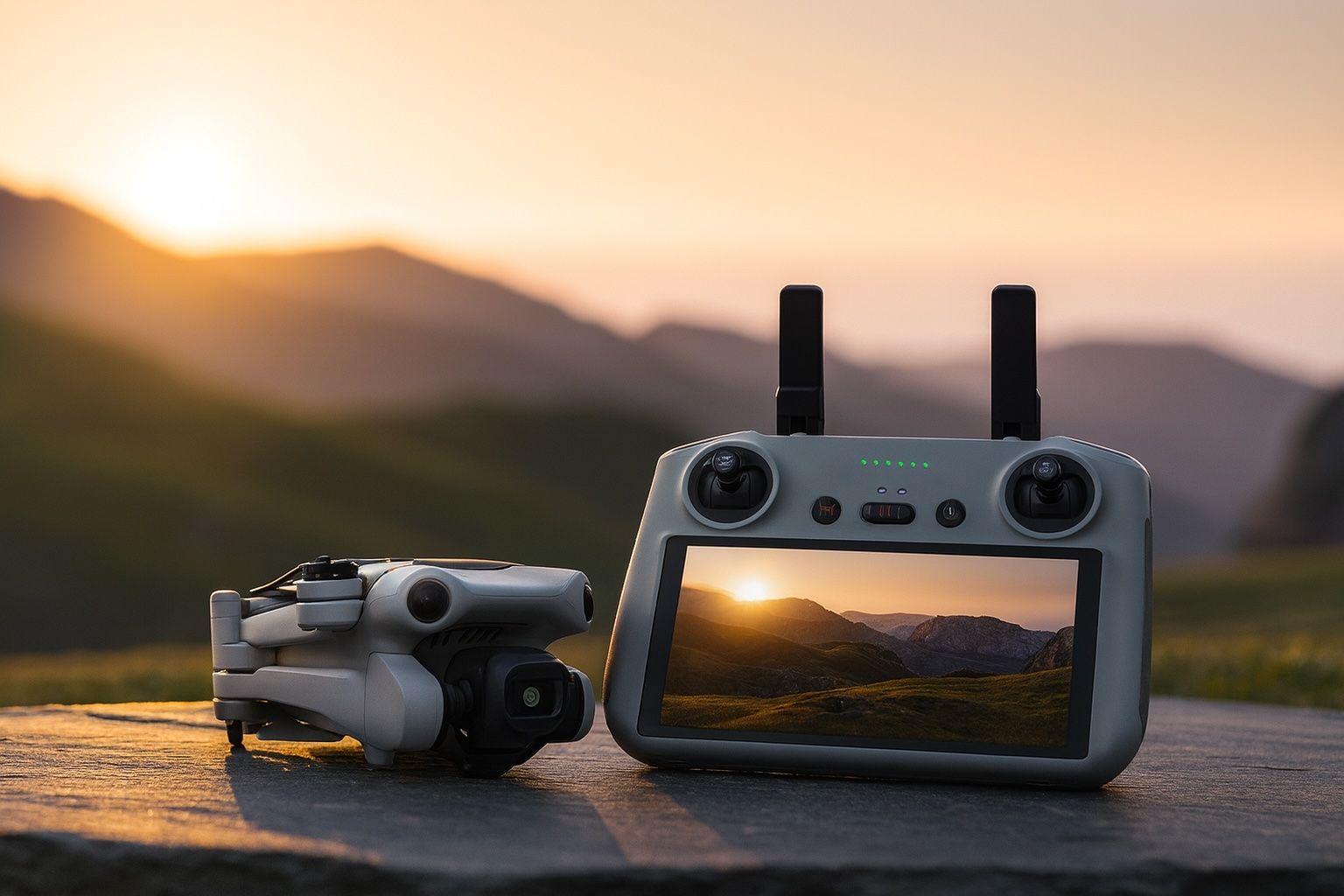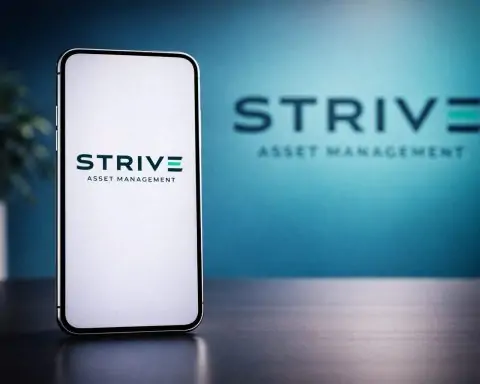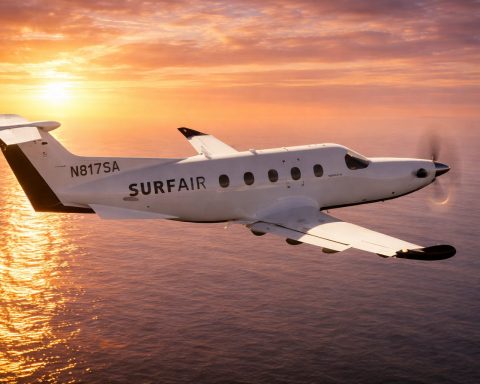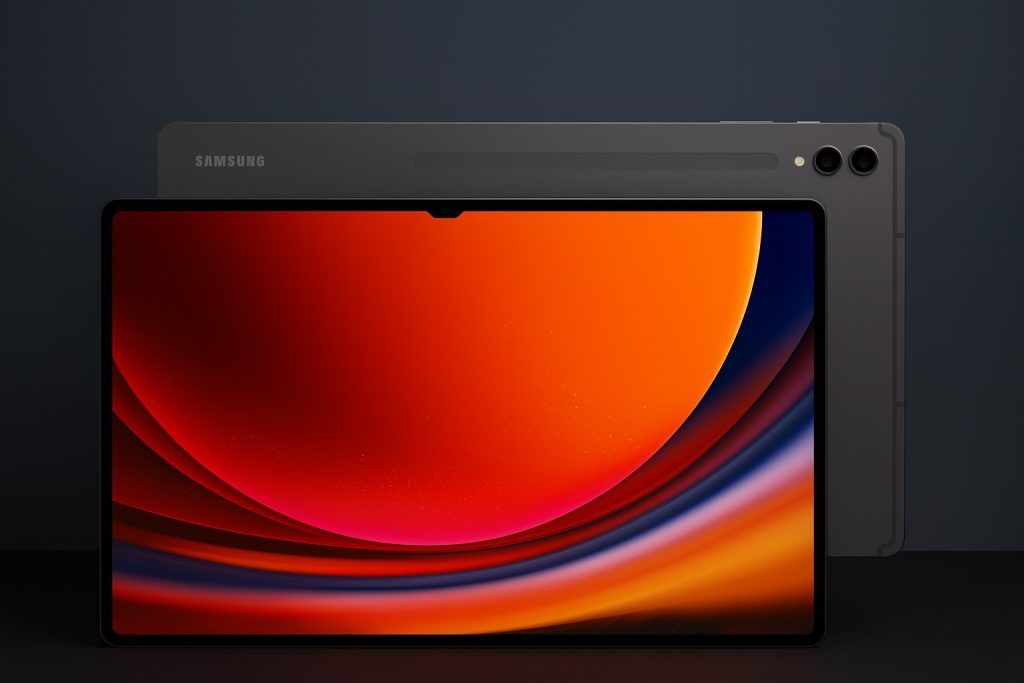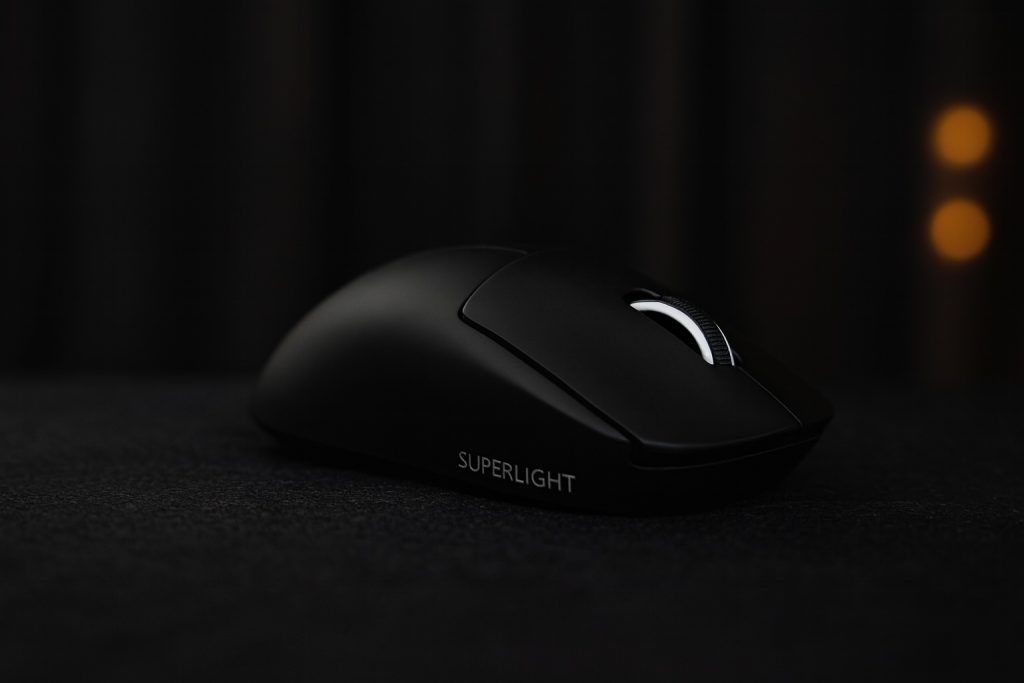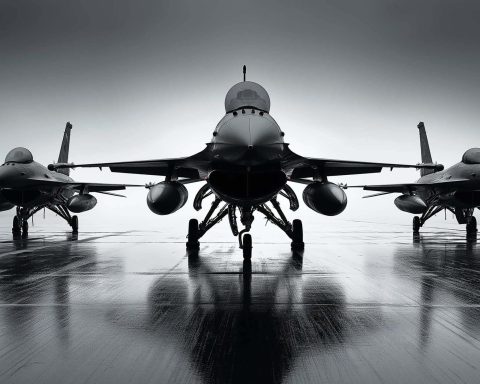- DJI Mini 4 Pro is sub-249 g, uses a 1/1.3-inch Quad-Bayer 48 MP camera, can shoot 4K at 100 fps, has a 24 mm equivalent f/1.7 lens, and delivers about 34 minutes of flight time with the standard Intelligent Flight Battery.
- An optional Intelligent Flight Battery Plus for the Mini 4 Pro extends flight time to about 45 minutes but increases weight above 249 g and may affect availability in some regions.
- The Mini 4 Pro ships with two controllers: the DJI RC-N2 for smartphone screen (~$759) and the DJI RC2 with built-in display (~$1,259).
- Autel Evo Lite+ features a 1-inch sensor with 20 MP stills, records 5.4K/30p and 4K/60p video, supports HDR and 10-bit, RAW, and includes a Moonlight night mode with ISO up to 64,000.
- The Evo Lite+ can achieve up to 40 minutes of flight per battery, weighs 866 g, and uses tri-directional obstacle sensing on the front, rear, and downward sides.
- The Evo Lite+ is rated for a range up to about 12 km in FCC regions, offers 2.7K live feed up to 1 km, and 720p beyond that, with Ludicrous mode up to 68 km/h (42 mph).
- The Skydio 2+ debuted in early 2022 as an autonomous-focused drone with six 200-degree fisheye cameras and an NVIDIA Tegra X2 AI chipset enabling full 360° obstacle avoidance and self-follow capabilities.
- The Skydio 2+ uses a 1/2.3-inch 12.3 MP Sony IMX577 camera with a fixed 20 mm f/2.8 lens, can record 4K/60 HDR and 1080p/120, but offers 8-bit color and no 10-bit/Log, and its battery around 65 Wh yields about 27 minutes ideal flight time.
- As of August 2025, consumers cannot buy a new Skydio 2+; Skydio sunset its consumer line in August 2023 and now sells enterprise drones like the X2 and X10, with warranty support for existing owners.
- The 2025 market includes DJI’s Mavic 4 Pro with a triple-camera system (100 MP wide, 48 MP mid tele 70 mm, 50 MP tele 168 mm), 6K60 video, omnidirectional vision plus infrared/LiDAR, and about 51 minutes flight time at roughly 1.06 kg, and DJI’s Air 3S with a 1-inch 50 MP main sensor, 70 mm 48 MP tele, 4K120 HDR main, 4K60 tele, 14-stop DR, and about 45 minutes flight time with up to 20 km O4 range.
In the fast-evolving drone market of 2025, three models stand out for consumers and prosumers: DJI’s Mini 4 Pro, Autel’s Evo Lite+, and Skydio’s 2+. Each drone offers a unique mix of portability, camera capability, flight performance, and smart features. Below, we compare their current availability, specifications, real-world performance, pricing, and features – including camera systems, battery life, obstacle avoidance, and flight modes – backed by expert reviews and the latest updates. We’ll also look at upcoming drone models from DJI, Autel, Skydio, and others to see how the future lineup stacks up against these three. Let’s dive into the ultimate drone showdown of 2025.
DJI Mini 4 Pro – Ultra-Lightweight, Big on Features
The DJI Mini 4 Pro is an ultra-light (sub-249g) drone that packs pro-level features like a 48 MP camera and omnidirectional obstacle sensing. DJI’s Mini 4 Pro is the latest iteration of its “Mini” series and is designed to skirt strict drone regulations by weighing under 250 g. Released in late 2024, it’s widely available globally through DJI and retailers. Despite its tiny size, the Mini 4 Pro “punches above its weight” in image quality and functionality [1] [2], making it a “worthy upgrade to the Mini 3 Pro” [3] according to Amateur Photographer.
Key Specs & Features:
- Camera: 1/1.3-inch CMOS sensor (Quad-Bayer) capable of 48 MP or 12 MP stills [4] [5]. Shoots video up to 4K at 100fps (4K/100p) for slow-motion footage [6]. Wide 24mm equivalent lens, f/1.7 aperture [7] for better low-light performance.
- Flight Time: ~34 minutes with the standard Intelligent Flight Battery [8]. (An optional Intelligent Flight Battery Plus extends flight time up to ~45 minutes, though using it makes the drone heavier than 249g and in some regions it’s not sold due to weight regulations [9].)
- Weight & Portability: <249 grams (8.8 oz) takeoff weight including battery and microSD, keeping it under common registration thresholds [10] [11]. Folding design for easy transport [12].
- Obstacle Avoidance:Omnidirectional obstacle sensing – forward, backward, downward, and upward sensors (the Mini 4 Pro adds upward sensors over its predecessor) [13]. This 360° obstacle avoidance system greatly improves safety when flying in complex environments [14]. (Note: obstacle sensing is disabled in certain automated flight modes and at high speeds [15].)
- Flight Modes: Offers DJI’s intelligent shooting modes like MasterShots, FocusTrack (ActiveTrack subject tracking), QuickShots, and Hyperlapse. Notably, the gimbal can rotate 90° for true vertical video/photos (social-media-friendly) [16]. It also has a Cine mode for smooth, slow cinematic movement [17].
- Controller Options: Sold with either the DJI RC-N2 (uses your smartphone as screen) at about $759 MSRP, or the DJI RC2 (with built-in display) for about $1,259 [18]. The RC2 adds convenience but increases cost [19].
Real-World Performance: In the field, the Mini 4 Pro is easy to fly and remarkably quiet, making it discreet for urban or residential shoots [20]. Reviewers note it hovers steadily in light breezes, though its ultra-light build means strong winds can buffet it more than heavier drones [21]. (It’s rated for ~10 m/s wind resistance, about 22 mph [22].) The lightweight plastic chassis and propellers feel a bit fragile – a necessary trade-off to keep weight down [23]. In fact, Angela Nicholson of Amateur Photographer warns it “has a rather fragile feel” at sub-249g [24], though build quality is otherwise solid. The plus side of the tiny form is you can fly places larger drones might not – it’s stealthy and can slip into tight spots without drawing unwanted attention [25] [26]. Pilots just need to be mindful of wind and handle it with care during transport (DJI includes a propeller guard clip to hold those delicate props in place) [27].
Despite its size, the Mini 4 Pro offers high-end features previously limited to bigger drones. Its new omnidirectional vision system is a highlight – testers report it performs very well, providing extra safety especially when flying under trees or near structures [28]. One professional reviewer noted the real-time vision feed from the multiple cameras gives “a much clearer sense of spatial awareness” when navigating tight spaces [29]. This allows for confident flying in complex environments; the system isn’t just a gimmick, but something even pros can lean on when margins for error are slim [30].
Camera and Imaging: The Mini 4 Pro inherited the same camera hardware as the Mini 3 Pro [31], but that’s not a knock – it’s a very capable unit for its class. The 1/1.3″ sensor and 48MP mode yield detailed images and 4K footage that impressed reviewers, especially in good lighting [32]. Colors in standard profile are punchy yet natural [33], and it even offers D-Log M 10-bit color profile for those who want to grade footage [34]. However, physics are physics – in low light the small sensor can’t match larger drones. As one expert put it, you shouldn’t expect Mini 4 Pro footage to “match a mirrorless camera’s level of detail” once light drops or if you pixel peep, as noise will creep in due to the sensor limitations [35] [36]. Compared to a drone like the DJI Air 2S (with a 1-inch sensor), the Mini 4 Pro’s dynamic range and low-light performance are a notch below [37]. Nonetheless, for daytime and well-lit scenes, it delivers beautiful, detailed images that are a “major step up from DJI’s first-generation Mavic Pro” [38]. The fast f/1.7 lens helps in dawn/dusk conditions, albeit at the cost of some edge softness and shallow depth-of-field that can make focusing tricky up close [39] [40].
One unique ability is the gimbal’s 60° upward tilt, which allows for creative angles (e.g. shooting up towards a tall structure from below) that most drones can’t do [41]. Reviewers found this great for cinematic reveals and creative compositions. The Mini 4 Pro also has 2GB of internal storage for emergencies, though that only holds a handful of RAW photos – an SD card is basically required for serious use [42].
Expert Verdict: The consensus is that the DJI Mini 4 Pro is a remarkably powerful “little” drone that brings advanced capabilities to the sub-250g category. Angela Nicholson rated it highly for its feature set in such a compact form, calling it “a great array of features in a tiny, lightweight form” and an ultimate all-rounder in the lightweight class [43] [44]. Zhen S. Yang at Fstoppers highlighted the Mini 4 Pro as “that rare blend of ultra-portability with semi high-end functionality,” packing a 48 MP camera, 4K/120 video, and 34-min flight time in an ultra-light frame [45]. He notes it “offers a remarkable package in a tiny body” as long as you work within its limits [46]. The only real compromises cited are its vulnerability to wind and the inherent sensor-size limitations for image quality at the extremes [47] [48]. For many users – especially travelers or those needing a <250g drone for regulatory reasons – the Mini 4 Pro hits a sweet spot. As Fstoppers concludes, it’s “more than capable of delivering good results” and only shows its limits when you push for the last few percent of image quality that bigger drones could provide [49]. In short, the Mini 4 Pro is an exceptional portable drone that makes very few compromises for its size, and it remains one of the best value aerial cameras of 2025 in its weight class [50].
Autel Evo Lite+ – Big Sensor Alternative to DJI
Autel Evo Lite+ offers a 1-inch camera and long flight times, positioning itself as a strong DJI alternative. Autel Robotics’ Evo Lite+ is a mid-sized prosumer drone that directly competes with DJI’s Air/Mavic series. Launched in early 2022, it remains readily available in 2025 (often in Autel’s online store and retailers) and has benefitted from firmware updates over time. The Evo Lite+ earned attention as a “genuine DJI rival” with specs that in some areas outclass its DJI contemporaries [51]. It carries a larger camera sensor than the Mini or Air 2S and boasts one of the longest flight times in its class, making it a compelling choice for those who prioritize image quality and endurance.
Key Specs & Features:
- Camera: 1-inch CMOS sensor (20 MP) that can shoot up to 5.4K video at 30 fps, and 4K at 60 fps [52]. The larger pixels of the 1” sensor give it strong low-light capability and dynamic range for a consumer drone [53]. It supports HDR video and can capture 10-bit footage (though notably lacks a true Log profile in current firmware) [54] [55]. Stills can be saved as RAW (DNG) or JPEG. Autel also touts a “Moonlight” algorithm for night video, using ISO up to 64,000 in a dedicated Night mode [56].
- Lens: 29mm equivalent focal length, adjustable aperture from f/2.8 to f/11 [57]. This variable aperture is a standout feature – it lets pilots control exposure and depth-of-field, reducing blown highlights in bright conditions and enabling sharper results by stopping down (tests found the lens is sharpest around f/4-f/5.6) [58] [59]. Few drones in this price range offer aperture control.
- Flight Time: Up to 40 minutes of flight per battery (no-wind, ideal conditions) [60]. Real-world flight times are typically around 30+ minutes, which still beats most competitors in this class [61] [62]. The Lite+’s high-capacity battery and efficient design give it ~30% more flight endurance than similar drones (e.g. about 8-10 minutes more flight than DJI’s Air 2S) [63].
- Size & Weight: 866 grams takeoff weight (with battery and props) [64]. It’s significantly larger and heavier than the Mini drones – roughly comparable to a DJI Mavic in footprint. It folds for transport but still takes up more bag space than a DJI Air series, given its length of ~21 cm (8.3 inches) folded [65]. The build is robust: Autel uses stiff carbon-fiber-reinforced arms and the drone feels solidly constructed [66] [67].
- Obstacle Avoidance:Tri-directional sensing – sensors on the front, rear, and downward facing sides [68]. This enables forward and backward obstacle avoidance and ground sensing for landings. However, there are no sensors on the sides (lateral) or top, so the Lite+ cannot sense obstacles from the sides during, say, orbit shots [69] [70]. The avoidance system also disables itself in the fastest flight mode (“Ludicrous” mode) and in very low light, since it relies on vision sensors [71]. Overall it provides good coverage in most situations but lacks the fully omnidirectional safety net that DJI’s newer drones or Skydio have.
- Transmission Range: Autel’s SkyLink uses dual-band communication. The Evo Lite+ is rated for up to ~12 km (7.4 miles) range in FCC regions [72], with 2.7K live feed up to 1 km and 720p beyond that [73]. In practice, it has reliable signal strength; testers report little interference or dropouts even behind obstacles at closer ranges [74].
- Flight Modes: It offers standard modes including a smooth “Standard” mode and a high-speed “Ludicrous” mode (up to ~68 km/h or 42 mph) that disables avoidance for maximum agility [75]. The Lite+ also introduced Autel’s new Sky app (similar to DJI Fly). It includes a set of “MovieMaster” Quick Shots (automatic flight patterns for videos, analogous to DJI’s dronie, rocket, etc.) [76]. As of early firmware, Dynamic Track (subject tracking) was not initially available, but Autel promised and delivered it via updates [77]. By 2025, the Evo Lite+ can perform subject tracking and other autonomous flight features, although users have noted that Autel’s implementation isn’t quite as polished as DJI’s ActiveTrack.
Performance and Handling: Pilots generally praise the Evo Lite+ for its stable flight and power. Thanks to its weight and powerful motors, it handles wind extremely well – in fact Autel rates it for winds up to 61.2 km/h (~38 mph) [78], nearly double the Air 2S’s official spec. That extra mass and torque mean it doesn’t get tossed around easily; reviewers noted it “maintains its composure quite well even in stronger winds” [79]. The drone is also quite speedy: it can ascend at a brisk 8 m/s and hits ~18 m/s in horizontal flight (roughly on par with DJI’s Air 2S top speed) [80]. The battery life is a strong suit – many users can do multiple shots or orbits on one pack without rushing, and the included charging hub (in the premium bundle) allows sequential charging of three batteries for convenience [81].
The build quality instills confidence. TechRadar’s review team was “impressed by the quality of construction”, noting the high tolerances and sturdy arms that should survive minor bumps [82]. The included controller is comfortable (similar to a console gamepad) and offers precise control; however, it lacks some of DJI’s ergonomic touches (no built-in screen option, and no storage slots for the removable sticks) [83] [84].
One area where Autel historically lagged DJI is software. The Autel Sky app provides all the needed functionality and a similar layout to DJI’s app, but early reviews described it as a bit clunky or less refined [85] [86]. Some settings were buried or required extra taps, and quirks like certain “Pro” camera modes lacking features that auto mode had were pointed out as confusing limitations [87] [88]. Autel has been updating the app, but users still find it functional if not as slick as DJI’s software. The lack of a built-in no-fly zone database is a double-edged sword: it gives pilots more freedom (no automatic geofencing), but it places responsibility on the user to fly legally.
Image Quality: This is where the Evo Lite+ shines. The 1-inch sensor and Autel’s image tuning produce excellent results on par with the best consumer drones of its generation. DroneLife notes the larger sensor “performs well in dim conditions” and the aperture control gives it “another trump card versus the DJI Air 2S” [89]. Professional reviewers found the photo quality very high: PetaPixel reported “good image quality and impressive sharpness from center to corners” [90] [91]. The lens is optically strong, showing minimal distortion or falloff even in RAW files [92]. With the aperture, you can keep the shutter at optimal settings without ND filters in many cases. Photos in RAW (DNG) hold up well to editing; dynamic range allows recovery of highlights and shadows to a solid degree [93]. High ISO noise creeps in beyond ISO 800, but up to ISO 800 the images are quite clean [94]. The Lite+ can also shoot decent JPEGs out-of-camera – they are not overly sharpened or saturated, which is a plus [95]. For video, the 5.4K30 mode captures immense detail (great for cropping or downsampling) and 4K60 is available for smoother motion. The absence of a 10-bit Log profile is one of the few downsides noted (there’s no D-Log or similar flat profile on the Lite+, only standard or HDR color) [96]. This means serious filmmakers have less flexibility in color grading compared to DJI drones that offer D-Log M or 10-bit D-Cinelike. Autel may address this via firmware (there were hints at adding a log or increasing to 12-bit photo RAW in future updates) [97], but as of 2025 it remains a limitation.
Expert Verdict: The Autel Evo Lite+ has earned respect as “the best non-DJI camera drone you can buy” according to some independent reviewers [98]. TechRadar lauded it, saying “DJI Air 2S and Mavic 2 Pro have some serious opposition with the Evo Lite+.” They highlighted its significantly longer flight time and adjustable aperture camera as key advantages, making it “an enticing option for those who find the Mavic 3 too expensive” [99]. The same review’s verdict praised the Lite+ as “an amazingly versatile piece of flying camera equipment” in most respects [100] [101]. On the downside, TechRadar and others note it launched at a higher price than comparable DJI drones, and even by 2024 its official price was still about $1,149 (standard kit) [102] – a bit more expensive than the DJI Air 2S which often could be found for less [103]. The value equation depends on how much you value the Autel’s extra features (longer flight, bigger sensor, aperture). Many reviewers recommend watching for discounts on Autel bundles [104], which have indeed occurred (e.g. Autel has run promotions with the Premium Bundle – extra batteries, case, filters – under $1K). Overall, experts agree the Evo Lite+ delivers on its promises: it’s a high-quality drone with a great camera that can confidently stand as an alternative to DJI’s mid-tier drones. It especially makes sense for users who want to avoid DJI for personal or political reasons, or who crave that extra flight time and don’t mind a slightly bulkier drone. As one Redditor summed up: “The Skydio is great for tracking sports things. If you want a good photography drone, the DJI or Autel are superior.” [105] – the Autel Lite+ certainly fits that bill as a top photography drone in 2025.
Skydio 2+ – Autonomous Tracking Powerhouse (Now Pivoted to Enterprise)
Skydio 2+ features unmatched autonomous flying and obstacle avoidance, thanks to six fisheye navigation cameras and AI – though its 4K camera is only smartphone-sized. The Skydio 2+ is a unique entry in this trio. Released in early 2022 as an upgrade to the Skydio 2, it carved out a niche as the ultimate self-flying drone for action shots. Skydio, a U.S. company, engineered the 2+ less as a traditional photographer’s drone and more as an AI-powered autonomy platform – it can follow subjects through complex terrain with minimal pilot input. Its claim to fame is an unrivaled obstacle avoidance system that lets it track a moving subject (like a cyclist weaving through a forest) while dynamically dodging trees, branches, and other obstacles in real time. The 2+ also introduced a longer-range radio and a handy GPS beacon controller. However, as of 2023 Skydio has exited the consumer drone market, meaning the 2+ is no longer sold to the general public [106] [107]. Existing owners still receive support, and an enterprise-oriented Skydio 2+ Enterprise Kit is available for government/commercial customers [108] [109]. Despite this, the Skydio 2+ remains a fascinating benchmark for autonomous flight technology in 2025.
Key Specs & Features:
- Autonomy & Obstacle Avoidance: This is the Skydio 2+’s marquee feature. It has six 200º fisheye navigation cameras (positioned around the drone) that feed an onboard NVIDIA Tegra X2 AI chipset [110] [111]. This enables full 360° omnidirectional obstacle detection – effectively giving the drone “eyes” in every direction at all times. The system doesn’t just detect obstacles; coupled with Skydio’s AI, it actively predicts and plans paths around them. The result is industry-leading avoidance: the 2+ can fly itself through dense environments where other drones would quickly crash or give up. It excels in tracking people, vehicles, etc. from any angle (including head-on), while deftly bypassing obstacles without slowing down [112]. Reviewers have stressed that DJI’s APAS or Autel’s avoidance simply cannot match Skydio’s aggressive autonomous pursuit capabilities [113] [114]. The Skydio will confidently follow a subject from the front (something DJI’s tracking won’t do well) and slip through gaps that would terrify a human pilot [115]. In short, for autonomous tracking, Skydio 2+ is in a class of its own – even years after its release, “follow-and-film…features like KeyFrame are still in a class all on their own” according to Skydio’s CEO [116].
- Camera: Unlike the other two drones here, the Skydio 2+ uses a smaller camera sensor. It’s a 1/2.3-inch 12.3 MP CMOS (Sony IMX577) – essentially similar in size to what was in the DJI Mini 2 or many smartphones [117] [118]. It has a fixed 20 mm equivalent lens at f/2.8 aperture [119] [120]. This camera can record 4K video at 60 fps (HDR), or 1080p up to 120 fps slow-mo [121]. Stills can be taken in RAW (DNG) or JPEG. The dynamic range is about 13 stops per Skydio, but it’s limited to 8-bit color depth; notably, there is no 10-bit or Log video mode on the 2+ [122]. In other words, the camera is the clear weak link – it’s fine for casual 4K footage, but doesn’t approach the image quality of the Mini 4 Pro or Evo Lite+ which have much larger sensors and 10-bit options.
- Battery/Flight: The 2+ uses a magnetic attach battery. The upgraded 2+ battery (about 65 Wh) yields about 27 minutes of flight time in ideal conditions [123] [124] (versus ~23 minutes on the older Skydio 2 battery). In practice, 20+ minutes is typical when actively tracking. This is shorter than the Mini 4 Pro and much shorter than the Autel, reflecting the 2+’s smaller size and power-hungry AI system. The flight speed is comparable to other drones – it can do around 36 mph (in Sport mode) and has no issue keeping up with fast sports like biking. It’s not foldable; the frame is about 22.9 x 17.4 x 12.6 cm and the landing legs are fixed [125]. Weight is 775 g with the larger battery [126], which is fairly light for its capabilities.
- Control Options: Users can fly the Skydio 2+ in three ways: via a phone app (Wi-Fi control, short range), via the Skydio Beacon (a GPS handheld tracker with simple controls and extended range), or via a traditional twin-stick Controller (Skydio’s controller is actually a rebranded Parrot design, with phone mount) [127] [128]. The Beacon is a highlight: a small wand with a screen that you can carry or wear – the drone will follow the Beacon’s GPS at up to 3 km away, and you can use its few buttons to reposition the drone relative to you (in front, behind, orbit, etc.) [129] [130]. It essentially allows “magic leash” operation – great for sports enthusiasts who want the drone to track them without fiddling with joysticks. The traditional Controller, on the other hand, extends range up to ~6 km (3.7 mi) and gives full manual flight capability [131]. The controller experience is okay but not the focus of this drone – for instance, DPReview noted the sticks are short and the design basic, clearly “manual control is not the main focus” of this drone [132].
- Smart Features: Aside from the core tracking, the Skydio 2+ introduced a KeyFrame mode – you can program a cinematic flight path by setting keyframe points, and the drone will autonomously fly that route with smooth curves, allowing complex shots that look like a professional pilot flew them. It also has one of the most advanced Return-to-Home and vision-based navigation systems, which can even handle GPS-denied environments by visual positioning.
Performance in Use: The Skydio 2+ is essentially peerless for autonomous flight. In reviews, it has repeatedly stunned users by following subjects through scenarios that would instantly stump other drones. One report mentions how a Skydio could tail a subject “yet still follow the course and not crash into things… [it] absolutely wouldn’t hit anything”, whereas a DJI Mini 3 Pro in the same test struggled or gave up [133] [134]. The trade-off is that the Skydio’s aggressive obstacle dodging can lead to less predictable footage (it might take a wide swing around a tree to avoid it, creating a sudden camera movement). For action sports and outdoor adventures, however, that’s usually acceptable to get the shot safely. The 2+ is like having a flying cameraman that doesn’t need a pilot – it’s the drone you choose when you want to be in the footage rather than controlling the drone.
On the other hand, for static shots, smooth cinematic manual flying, or photography, the Skydio is less ideal. Pilots found the manual controls adequate, but this drone is heavier and doesn’t fold, so it’s not as travel-friendly as the others. Also, without downward facing GPS or vision positioning (Skydio relies on its fisheye cameras), it can sometimes drift a bit when stationary, whereas DJI drones hold position rock-steady.
Image and Video Quality: Here the Skydio 2+ underwhelms relative to its competition. DPReview flatly stated “the small sensor just isn’t up to snuff when it comes to image quality.” [135] [136] The camera is comparable to a decent phone camera or a budget drone like a DJI Mini 2: 12 MP stills and 4K footage that is fine for web use but lacks the clarity, dynamic range, and low-light performance serious aerial photographers want. In good lighting, you can get sharp 4K/60 footage and the colors/HDR are okay. But with only 8-bit color and no Log, you cannot push grades very far [137]. Shadow and highlight detail are limited compared to the 1-inch sensor drones. In low light, noise becomes an issue and the lack of any larger sensor or aperture means night video is not this drone’s forte. Skydio clearly prioritized the navigation system over the camera – an understandable choice given their market, but for pure imaging, both the Mini 4 Pro and Evo Lite+ easily outperform the Skydio 2+ camera. Many potential buyers in 2022 were hoping for an improved camera (Skydio did not upgrade the sensor from the original Skydio 2), which left some disappointed.
Current Availability: In August 2025, one cannot simply buy a new Skydio 2+ as a consumer. Skydio officially “sunset” its consumer offerings in August 2023, discontinuing the 2+ in its retail kits [138] [139]. The company shifted to serving enterprise and government clients with drones like the Skydio X2 and the new Skydio X10 (launched in late 2023 for public safety and industrial use). Skydio has stated they will honor warranties and keep supporting existing 2+ owners (including providing accessories/batteries as long as stock lasts) [140]. Enterprises can still obtain the 2+ in an enterprise configuration via reps or resellers [141] [142]. This pivot was driven by Skydio’s success in the enterprise sector (and possibly the challenging economics of the consumer drone market). As a result, the Skydio 2+ stands as the last of its kind for now – a consumer-grade autonomous drone that truly flies itself.
Expert Verdict: Reviews of the Skydio 2+ often read as two products in one: phenomenal autonomy, mediocre imaging. Digital Photography Review titled their review “Tracking tech wows but image quality disappoints,” which sums it up [143]. They loved how the Skydio could do things no other drone would – for solo adventurers, it’s a game-changer to have a drone that can film you without a pilot. They also noted the system’s limitations for cinematography due to the camera. Many tech writers lamented that Skydio didn’t produce a “Skydio 3” with a bigger sensor, saying it could have potentially rivaled DJI if it matched their camera prowess. As IEEE Spectrum put it, “you can no longer buy a consumer Skydio 2… The less terrible news is Skydio has promised to continue support” [144]. The Verge’s coverage of Skydio’s exit praised the 2+’s technological feats and expressed sadness that we “never get a Skydio Mini… a tiny folding drone that can follow me around… I’ve always wanted that”, underscoring the vacuum Skydio leaves in the consumer space [145]. In summary, the Skydio 2+ is unmatched for autonomous tracking and obstacle avoidance – it still outperforms DJI’s latest in that department – but as a general-purpose camera drone it falls short. With Skydio’s pivot, consumers looking for a self-flying drone will either have to hunt for a used 2+ or hope another company picks up the mantle in the future.
Upcoming and Future Drones (DJI, Autel, Skydio & Others)
The drone landscape as of August 2025 is dynamic. DJI continues to dominate the market with frequent releases, Autel is striving to keep up with high-end features, Skydio has shifted focus, and a few other players are targeting niche or professional segments. Here’s a look at upcoming models and recent releases from major manufacturers – and how they compare to the DJI Mini 4 Pro, Autel Evo Lite+, and Skydio 2+.
DJI: Pushing the Envelope with Mavic 4 Pro and Air 3S
DJI has had several noteworthy releases recently. The flagship new model is the DJI Mavic 4 Pro, introduced in 2025 as the successor to the Mavic 3 series. It ups the ante significantly in camera and flight performance. The Mavic 4 Pro features a triple-camera system with wide, medium, and telephoto lenses: a 100 MP wide-angle (28mm equiv) main camera, a 48 MP medium tele (70mm), and a 50 MP telephoto (168mm) [146]. This multi-camera setup allows unmatched versatility – you can capture sweeping 100MP landscapes or zoom in optically for tight shots, all during the same flight. It supports video up to 6K (6016×3384) at 60 fps on the wide camera [147], delivering superb image quality. The Mavic 4 Pro also brings cutting-edge obstacle avoidance, using omnidirectional vision supplemented by infrared/LiDAR sensors for even better obstacle detection in low light [148]. With its large batteries, it boasts an incredible 51-minute flight time (under ideal conditions) [149] – roughly 50% longer than the previous generation. This drone is larger and heavier (approx 1.06 kg) than the Mavic 3, and its top speed is about 97 km/h (60 mph) [150], making it one of the fastest prosumer drones. Early hands-on reports, such as one by photographer Nigel Danson, praise the Mavic 4 Pro’s improved imaging and responsiveness, noting the return to a 28mm lens (from 24mm on Mavic 3) helps with sharper panoramas and that switching between its three lenses is smooth and quick [151] [152]. In short, the Mavic 4 Pro is a class above the Mini 4 Pro, Evo Lite+, or Skydio 2+ – it’s a pro-tier drone with a price tag to match (well above $2,000). It delivers far superior image quality and flexibility, but at the cost of size and money. For prosumers who demand the best aerial camera and don’t mind heavier drones, the Mavic 4 Pro sets a new benchmark in 2025.
On the mid-range front, DJI released the Air 3S in late 2024. The Air 3S is essentially an enhanced version of the Air 3, aimed at travelers and enthusiast photographers. It introduced a dual-camera system: a primary 1-inch CMOS camera (50 MP) and a secondary 3× tele camera (70mm, 48 MP) [153]. This is notable because it brought a 1-inch sensor to the Air series, significantly improving low-light and dynamic range performance over the previous 1/1.3″ dual cams. The Air 3S can shoot 4K up to 120 fps (HDR) on the main camera and 4K/60 on the tele, all in 10-bit with up to 14 stops dynamic range [154]. It also features omnidirectional obstacle sensing – in fact, it’s DJI’s first drone to incorporate a forward-facing LiDAR in addition to vision sensors, which gives it superb obstacle detection even at night [155] [156]. With a flight time around 45 minutes [157] and O4 transmission offering up to 20 km range/1080p live feed [158], the Air 3S is an extremely capable drone for its size/price. Reviewers have been very positive: TechRadar called it “a slightly greater version of the Air 3… excellent all-round camera performance, safe and simple flying, and long battery life make it a brilliant buy” [159]. Engadget dubbed it DJI’s “most technologically advanced drone yet” in terms of sensors and tracking, given the LiDAR and ActiveTrack 360° improvements [160]. Priced around $1,099 (base) to $1,599 (Fly More Combo) [161], the Air 3S slots between the Mini and Mavic series. For someone considering an Autel Evo Lite+, the Air 3S is a very direct competitor – it offers the same 1” sensor quality (and then some, with an extra tele lens and better obstacle avoidance). As of 2025, the Air 3S likely erodes much of the appeal of the older Evo Lite+, unless one specifically wants to avoid DJI. In summary, DJI’s upcoming (and recent) models like the Mavic 4 Pro and Air 3S continue to raise the bar. The Mini 4 Pro, while excellent, is outclassed in pure performance by these larger drones, but DJI ensures there’s a product for every niche: from sub-250g convenience to flagship powerhouses.
Looking further ahead, rumors swirl about a possible DJI Mini 5 or other new Minis in 2025/26, potentially bringing even higher video resolution (some speculate 8K video on a Mini-class drone) [162]. DJI hasn’t confirmed anything as of August 2025, but if history is a guide, we might see a Mini 5 or Mini 4 Pro “Plus” version down the line with incremental improvements. For now, DJI’s focus seems to be refining dual-camera systems and advanced sensors across their lineup, as seen with the Air 3S and Mavic 4 Pro launches.
Autel: Plans for Evo III?
Autel Robotics has kept a lower profile in 2024–2025, working mainly on incremental updates and enterprise offerings. Their most recent consumer models remain the Evo Lite/Lite+ and the smaller Evo Nano/Nano+ (sub-250g category) from late 2021. They also released Evo II V3 versions – updated spins on their older Evo II Pro 6K drone – featuring improved communications (Autel SkyLink 2.0) and compatibility with new smart controllers. However, Autel hasn’t yet launched a true “Evo III” as many enthusiasts anticipated. There have been rumors of an Autel Evo III on the horizon, potentially aiming to leapfrog DJI in certain tech. For instance, some leaks (to be taken with skepticism) hinted at experimental features like “antigravity-inspired propulsion” for extreme stability and a whopping 60-minute flight time [163]. While such claims are unconfirmed and rather speculative, they indicate Autel’s intent to push boundaries. More realistically, an Evo III (if it appears) would likely include a larger camera sensor (maybe Micro 4/3 to rival DJI’s Mavic 3/4 series), omnidirectional obstacle avoidance (catching up to DJI and Skydio’s 360° sensing), and further improvements to transmission range and AI functions. Autel did showcase an Evo Max 4T at CES 2023 – but that is an enterprise drone (with thermal imaging and advanced autonomy for public safety). If any of that tech trickles down, a future Evo III might have features like smart object tracking, improved autonomous flight modes, and maybe even modular payload options.
For now, Autel’s current lineup still offers strong options especially for those seeking a non-DJI platform. The Evo Lite+ remains a top choice for camera quality in the consumer segment (until Autel’s next release). The smaller Autel Evo Nano+ (249g) is also worth mentioning for consumers – it’s a mini drone with a 1/1.28″ (≈0.8″) sensor and was one of the first minis with obstacle sensing and a RYYB color filter sensor for better low light. Autel updated the Nano+ via firmware with features like 4K HDR and improved avoidance in 2023 [164]. That said, DJI’s Mini 3 Pro and Mini 4 Pro have largely overshadowed the Nano series. Autel will need the hypothetical Evo III or other new models to stay relevant at the high end. If they deliver a drone with, say, a full 360° obstacle system and perhaps an even longer flight time than the Lite+ (and maybe address software polish), it could directly challenge DJI’s Air or even Mavic series. Until then, Autel’s strategy seems to be incremental improvements and aggressive pricing on existing models to entice buyers away from DJI.
Skydio and Other Players: The Landscape After Skydio’s Exit
With Skydio’s exit from the consumer market, the gap in autonomous-follow drones is apparent. No other consumer drone in 2025 can do what the Skydio 2+ did in terms of AI tracking. DJI has improved ActiveTrack (the Air 3S introduced ActiveTrack 360 which can fully circle subjects, and even the Mini 4 Pro can track subjects now), but DJI’s drones still tend to play it safe – slowing or stopping if obstacles get too complex, and requiring more manual input than Skydio’s “hands-off” approach [165]. For now, if one wants Skydio-level autonomy, the options are limited to enterprise drones or waiting to see if Skydio ever returns with a consumer model (the company has not announced any plans to do so, focusing entirely on enterprise and military contracts). A positive side is that Skydio’s technology lives on in its Skydio X10 drone (launched in late 2023) for enterprise, which features an even more advanced AI, thermal and optical sensors, and is modular. That tech could trickle down to prosumer gear if Skydio or another U.S. firm ever targets consumers again.
Other manufacturers have largely retreated or aimed at specialized niches. Parrot, the French manufacturer known for the Anafi, has pivoted to enterprise and defense (e.g., Anafi USA and Anafi AI with advanced features for surveying). As a result, Parrot hasn’t released a new consumer drone in years – nothing to directly compare with the models above. Yuneec, another early drone maker, also shifted to commercial products and has a minimal consumer presence now. GoPro tried with the Karma back in 2016, but after that failed, they left the drone business entirely.
One interesting entrant in the prosumer space is Sony with its Airpeak S1 drone – a very high-end drone designed to carry Sony Alpha cameras. However, the Airpeak is priced around $9,000 (without a camera) and targets filmmakers; it’s not a competitor to the likes of DJI Mini or Autel Lite+. It shows that big companies see value in drones, but for now, DJI’s dominance in the <$2000 segment remains unchallenged.
There are also smaller brands and rebrands (like EXO Drones in the US which partners with Hubsan, or others offering budget drones), but these typically do not match the capabilities of DJI, Autel, or Skydio’s products. One niche product worth a note: the XDynamics Evolve 2, a Hong Kong-made drone, offers a Micro Four Thirds 4K camera and slick design [166]. It’s a $3,000+ prosumer drone that got some attention in 2022, but it remains niche due to its price and the company’s limited ecosystem.
Overall, consumers and prosumers in 2025 benefit from drones that are more powerful and feature-rich than ever. DJI leads with a full range – from minis to the cutting-edge Mavic 4 Pro – while Autel provides a viable alternative with an emphasis on image quality and no geofencing. Skydio’s absence is felt by those who valued ultimate autonomy, but DJI is slowly integrating better AI tracking in response, and we may see new competitors emerge focusing on that gap (perhaps a future Parrot or even a startup). For anyone shopping now, the DJI Mini 4 Pro, Autel Evo Lite+, and Skydio 2+ (if you can find one) each cater to different needs: the Mini 4 Pro for maximum portability and regulatory ease, the Evo Lite+ for camera and flight endurance, and the Skydio 2+ for unrivaled autonomous filming. And on the horizon, drones are only getting smarter: we’re seeing longer flight times, multi-camera setups, advanced night-flying sensors, and AI features once thought futuristic. It’s an exciting time for drone enthusiasts, with each major player pushing the others to innovate – meaning better drones for us all.
Sources: The information above is compiled from expert drone reviews and news updates, including Amateur Photographer [167] [168], Fstoppers [169] [170], TechRadar [171] [172], PetaPixel [173] [174], Digital Photography Review [175] [176], DroneLife [177] [178], company official releases and more, reflecting the state of these drones and the market as of August 2025.
References
1. amateurphotographer.com, 2. amateurphotographer.com, 3. amateurphotographer.com, 4. amateurphotographer.com, 5. amateurphotographer.com, 6. amateurphotographer.com, 7. amateurphotographer.com, 8. amateurphotographer.com, 9. amateurphotographer.com, 10. amateurphotographer.com, 11. amateurphotographer.com, 12. amateurphotographer.com, 13. amateurphotographer.com, 14. fstoppers.com, 15. amateurphotographer.com, 16. amateurphotographer.com, 17. fstoppers.com, 18. amateurphotographer.com, 19. amateurphotographer.com, 20. fstoppers.com, 21. amateurphotographer.com, 22. amateurphotographer.com, 23. fstoppers.com, 24. amateurphotographer.com, 25. fstoppers.com, 26. fstoppers.com, 27. fstoppers.com, 28. amateurphotographer.com, 29. fstoppers.com, 30. fstoppers.com, 31. amateurphotographer.com, 32. fstoppers.com, 33. amateurphotographer.com, 34. fstoppers.com, 35. fstoppers.com, 36. fstoppers.com, 37. fstoppers.com, 38. fstoppers.com, 39. fstoppers.com, 40. fstoppers.com, 41. fstoppers.com, 42. fstoppers.com, 43. amateurphotographer.com, 44. amateurphotographer.com, 45. fstoppers.com, 46. fstoppers.com, 47. fstoppers.com, 48. fstoppers.com, 49. fstoppers.com, 50. amateurphotographer.com, 51. www.techradar.com, 52. www.techradar.com, 53. www.techradar.com, 54. www.techradar.com, 55. www.techradar.com, 56. petapixel.com, 57. petapixel.com, 58. petapixel.com, 59. petapixel.com, 60. www.techradar.com, 61. www.techradar.com, 62. www.techradar.com, 63. www.techradar.com, 64. petapixel.com, 65. petapixel.com, 66. petapixel.com, 67. www.techradar.com, 68. www.techradar.com, 69. www.techradar.com, 70. www.techradar.com, 71. www.techradar.com, 72. ataymuhendislik.com, 73. www.techradar.com, 74. www.techradar.com, 75. www.techradar.com, 76. www.techradar.com, 77. www.techradar.com, 78. www.techradar.com, 79. petapixel.com, 80. www.techradar.com, 81. www.techradar.com, 82. www.techradar.com, 83. www.techradar.com, 84. www.techradar.com, 85. petapixel.com, 86. petapixel.com, 87. petapixel.com, 88. petapixel.com, 89. www.techradar.com, 90. petapixel.com, 91. petapixel.com, 92. petapixel.com, 93. petapixel.com, 94. petapixel.com, 95. petapixel.com, 96. www.techradar.com, 97. petapixel.com, 98. www.thedronegirl.com, 99. www.techradar.com, 100. www.techradar.com, 101. www.techradar.com, 102. www.techradar.com, 103. www.techradar.com, 104. www.techradar.com, 105. www.dpreview.com, 106. www.skydio.com, 107. www.theverge.com, 108. www.skydio.com, 109. www.theverge.com, 110. www.dpreview.com, 111. www.dpreview.com, 112. www.dpreview.com, 113. www.dpreview.com, 114. www.dpreview.com, 115. www.dpreview.com, 116. www.skydio.com, 117. support.skydio.com, 118. www.dpreview.com, 119. support.skydio.com, 120. www.dpreview.com, 121. www.dpreview.com, 122. www.dpreview.com, 123. www.dpreview.com, 124. www.dpreview.com, 125. www.dpreview.com, 126. www.dpreview.com, 127. www.dpreview.com, 128. www.dpreview.com, 129. www.dpreview.com, 130. www.dpreview.com, 131. www.dpreview.com, 132. www.dpreview.com, 133. www.dpreview.com, 134. www.dpreview.com, 135. www.dpreview.com, 136. www.dpreview.com, 137. www.dpreview.com, 138. www.skydio.com, 139. www.theverge.com, 140. www.skydio.com, 141. www.skydio.com, 142. www.theverge.com, 143. www.dpreview.com, 144. spectrum.ieee.org, 145. www.theverge.com, 146. fstoppers.com, 147. fstoppers.com, 148. fstoppers.com, 149. fstoppers.com, 150. fstoppers.com, 151. fstoppers.com, 152. fstoppers.com, 153. dronelife.com, 154. dronelife.com, 155. dronelife.com, 156. dronelife.com, 157. dronelife.com, 158. dronelife.com, 159. dronelife.com, 160. dronelife.com, 161. dronelife.com, 162. loyaltydrones.com, 163. loyaltydrones.com, 164. loyaltydrones.com, 165. www.dpreview.com, 166. fstoppers.com, 167. amateurphotographer.com, 168. amateurphotographer.com, 169. fstoppers.com, 170. fstoppers.com, 171. www.techradar.com, 172. www.techradar.com, 173. petapixel.com, 174. petapixel.com, 175. www.dpreview.com, 176. www.dpreview.com, 177. dronelife.com, 178. dronelife.com
